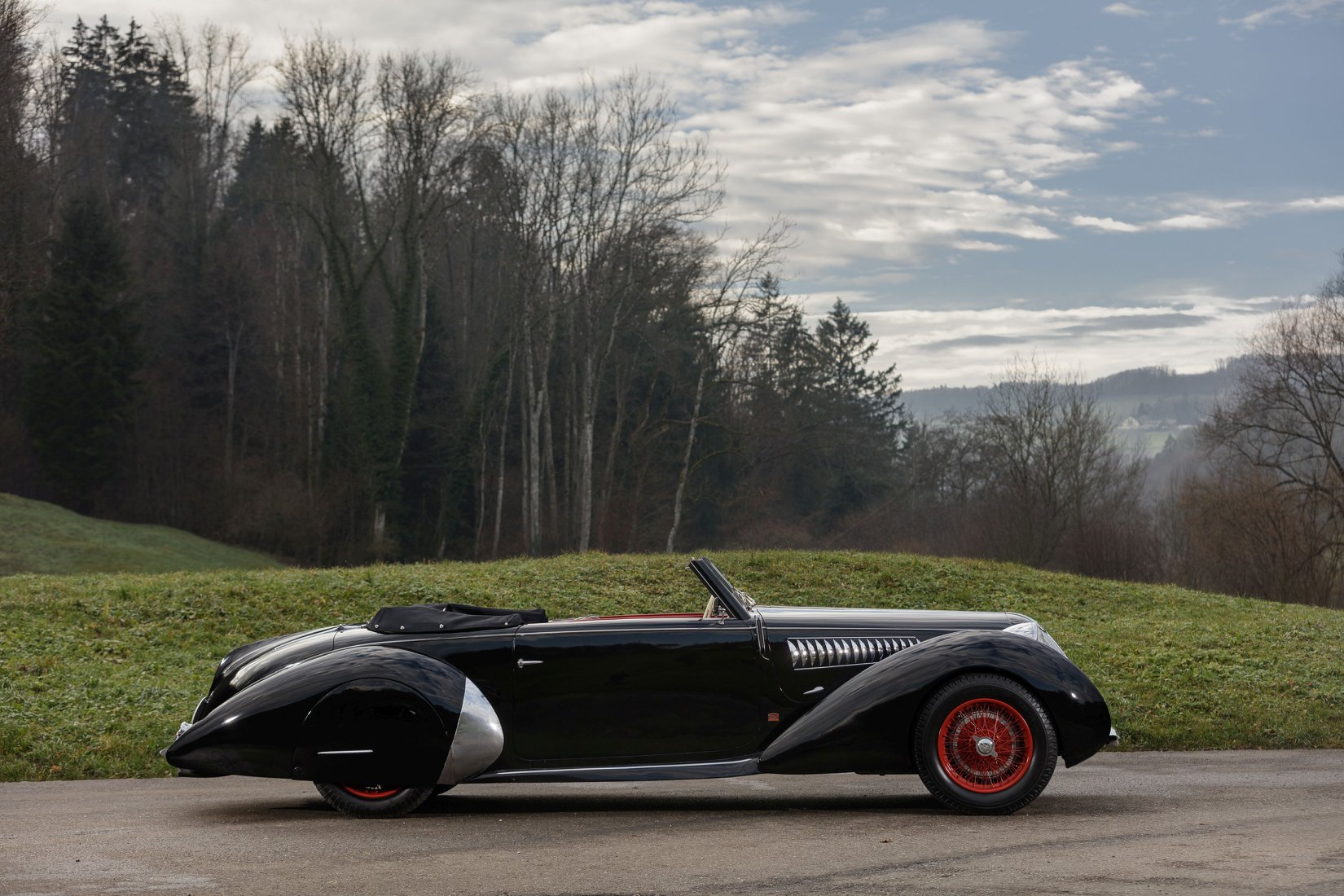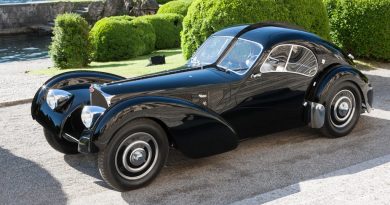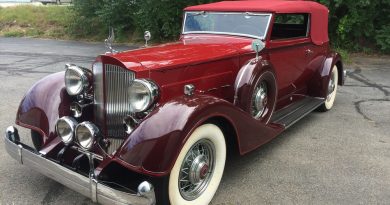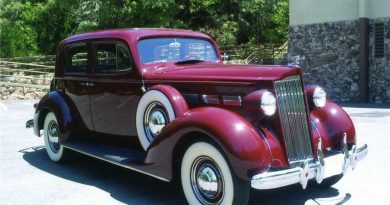1938 Alfa Romeo 6C 2300 B Cabriolet
The Alfa Romeo 6C name was used on road, race, and sports cars produced between 1927 and 1954 by Alfa Romeo; the “6C” name refers to the six cylinders of the car’s straight-six engine. Bodies for these cars were made by coachbuilders such as James Young, Zagato, Touring Superleggera, Castagna, and Pinin Farina. Beginning in 1933 there was also a 6C version with an Alfa factory body, built in Portello. In the early 1920s Vittorio Jano received a commission to create a lightweight, high performance vehicle to replace the Giuseppe Merosi designed RL and RM models. The car was introduced in April 1925 at the Salone dell’ Automobile di Milano as the 6C 1500. It was based on Alfa’s P2 Grand Prix car, using a single overhead cam 1,487 cc in-line six-cylinder engine, producing 44 horsepower. In 1928 the 1500 Sport was presented, which was the first Alfa Romeo road car with double overhead camshafts.

The advanced technology of the Alfa Romeo 6C 2300 was a milestone in the history of the automobiles, as it was among the earliest European cars to be developed with independent suspension. The engine, introduced in 1934, with 6 cylinders in line and a capacity of 2’309 cc, is made of a cast iron monobloc and an aluminium alloy cylinder head. The valves are in a V arrangement in the cylinder head and are driven by two overhead camshafts, driven and controlled by a chain timing gear. This engine remained in Alfa Romeo’s range until 1952. Combined with a four-speed gearbox, with a gear lever on the centre tunnel, this cabriolet was a very sporty car. The drum brakes on the four wheels were hydraulically operated and no longer by mechanical linkages as on the 6C 1750.

Only a year later a heavily modified version was introduced, simply dubbed 6C 2300 B. The engine was only slightly refined, but many of the chassis and suspension components were brand new. Derived from the marque’s racing cars, the suspension was now independent all around with wishbones at the front and swing axles at the rear. Another big improvement was the revised aerodynamic styling, which improved top speeds by quite a bit. The line up remained unchanged with the long wheelbase Turismo, and the shorter Gran Turismo and Pescara models.

The first coachbuilder to grapple with new 2300 was Castagna, with a luxury sedan that had a Long wheelbase chassis and Pininfarina and Boneschi bodywork. The short MM type chassis was first used by the Farina two-seater cabriolet and by Ghia for the 4-seater, the 6-seater Castagna cabriolet with a long chassis, used by Hitler`s visit to Italy.

In the case of the Touring-bodied 6C 2300B Mille Miglia, one is presented with car of incomparable style, exquisite Art Deco detailing and considerable rarity; a car augmented by a fascinating backstory, unparalleled provenance and benefitting from an exacting and subsequently well-maintained restoration. Beautifully presented, and ideally suited to all manner of touring events and concours d’elegance, pre-war motoring can seldom be enjoyed more serenely, or stylishly, than this.




